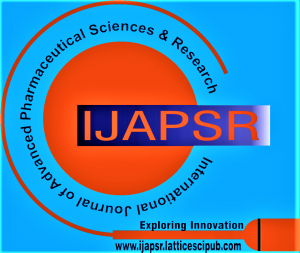![]()
Insilico Studies on Bioactive Compounds from Solanum Nigrum as Phospholipase A2 Inhibitors
Veerapandi Loganathan1, Lekhashri Vijayan2, Riya Mariyam Rinu3, Ahalya Madhu4
1Veerapandi Loganathan, Assistant Professor, Department of Food Technology, Nehru Institute of Technology, Kaliyapuram, Coimbatore (Tamil Nadu), India.
2Lekhashri Vijayan, Department of Food Technology, Saintgits College of Engineering, Kottukulam, Pathamuttom Hills, Kottayam (Kerala), India.
3Riya Mariyam Rinu, Department of Food Technology, Saintgits College of Engineering, Kottukulam, Pathamuttom Hills, Kottayam (Kerala), India.
4Ahalya Madhu, Department of Food Technology, Saintgits College of Engineering, Kottukulam, Pathamuttom Hills, Kottayam (Kerala), India.
Manuscript received on 25 February 2023 | Revised Manuscript received on 28 March 2023 | Manuscript Accepted on 15 June 2023 | Manuscript published on 30 June 2023 | PP: 40-47 | Volume-3 Issue-4, June 2023 | Retrieval Number: 100.1/ijapsr.E4024083523 | DOI: 10.54105/ijapsr.E4024.03040623
Open Access | Editorial and Publishing Policies | Cite | Indexing and Abstracting
© The Authors. Published by Lattice Science Publication (LSP). This is an open-access article under the CC-BY-NC-ND license (http://creativecommons.org/licenses/by-nc-nd/4.0/)
Abstract: The prevalence of high mortality rates due to snake bites is widely found in Indian farmlands, as most poisonous snake varieties are found in these areas. Although many antivenoms, like antivenin, have been formulated to treat snake bites, they have limitations, such as high cost and difficulties in storage. Most deaths are primarily due to the time delay in treating snakebites. The venom’s activity, or its poisonous nature, has been attributed to enzymes such as Phospholipase A2, hyaluronidase, and protease. As a solution for this problem, the active site of these enzymes can be elucidated and inhibited using extracts from plants and food sources through docking studies. Literature reports suggest that Solanum nigrum compounds have shown high inhibitory activity. In this study, we analysed a list of upregulated compounds in response to venom enzymes. From the analysis, we filtered out eight possible compounds. A docking study was carried out on these bioactive compounds in Solanum nigrum. The mode of interaction of the bioactive compound was studied using AutoDock software. Insilico molecular docking and molecular dynamics simulation were performed using Phospholipase A2 (1BK9) to understand the conformational changes and to analyse the optimal binding pocket. Analysis shows that it has very favourable predicted binding energy. The bonding interaction was formed between the active site of PLA2 and bioactive compounds. From the results, it has been observed that beta-sitosterol exhibits a favourable interaction with PLA2 (1BK9) compared to other bioactive compounds.
Keywords: Snake Bite; Antivenom; Solanum Nigrum; Molecular Docking; Molecular Dynamics; PLA2.
Scope of the Article: Medical Physiology
